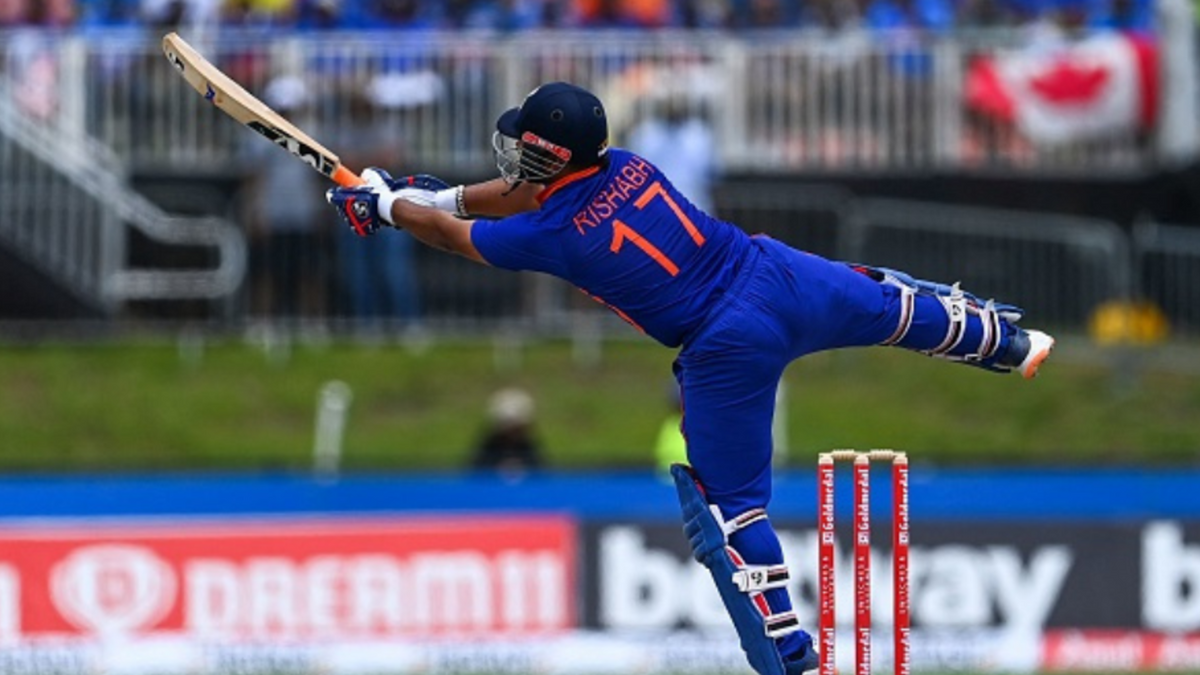
Rishabh Pant was not a part of India’s XI in their high-intensity clash against Pakistan on Sunday. Is there really no spot for the once-in-a-generational batter in the side?
For all his eccentricities in Test cricket, Pant has been unable to crack T20 Internationals. While he is well on his way to superstardom in the longest format, a strike rate of 126 in 54 T20Is does not speak too highly of him. His troubles are not limited to just 20-over games for India. After a few incredible seasons, he struck at 114 in IPL 2020 and and at 129 in 2021, with a combined total of four fifties across two seasons.
However, he bounced back in style in the IPL this year, striking at an impressive 152. Though he failed to reach fifty – the first time he missed out since his first year, in 2016 – he was often the lone warrior in a struggling Delhi Capitals middle-order.
His omission from the XI, then, did raise eyebrows because, despite his struggles, his talent is undeniably unquestioned, his ability to manoeuvre through the obstacles, not in doubt.
What doesn’t work for Pant in the current India XI
Pant needs time to get going. In short, the fewer he scores, the lower his strike rate. In T20Is, he has scored between 15 and 25 nine times and has batted with a two-digit strike rate five times, and at around 125 twice. As with Test cricket, he takes time to settle – but that approach quickly depletes the overs for his team.
Can India really afford another player who bats conservatively upfront, given that their top three – KL Rahul, Virat Kohli and Rohit Sharma – are all experienced players but similar slow starters? Realistically, Kohli and Rohit are certainties in the XI. Neither scores very quickly, a fact that was once again exposed against Pakistan when they combined to score 49 runs in 7.4 overs before falling in quick succession, putting pressure on the middle order.
The other batters – Suryakumar Yadav, Dinesh Karthik and Hardik Pandya – have the ability to hit from the start That is something Pant, on current ability, has not shown signs of. Slotting him down the order is not ideal, which means that he can bat in the top four. But then, is having four relatively cautious starters one after the other also ideal?
What works for Pant in the current India XI
The lack of a left-hander in the top six. Jadeja, with a strike rate of 124, was promoted to No.4 against Pakistan as the spinners came on. Keeping in mind the presence of Shadab Khan, a leg-break bowler, and Mohammad Nawaz, a slow left-armer, the move was understandable, but Jadeja himself is not the most fluent against spin in the middle overs. His T20I strike rate against spin between overs six to 16 is 88, including 93 against leg-spin.
Pant has also struggled against slow-left armers in T20Is, scoring at 104, but a strike rate of 147 against them in the IPL suggests that he does have their measure. Against leg-break bowlers, his strike rate is 147 in all T20.
Jadeja scored a handy 29-ball 35 against Pakistan, but his struggles against spin were apparent. If India do want a left-hander in the midst, Pant should be the preferred batter.
Where does Pant fit in?
A like-for-like replacement will be Pant coming into the XI in place of Karthik. However, Karthik becomes key at the death, a role Pant may not be suited for. Karthik made a comeback to the side after a stellar IPL, where he smashed 385 in the last four overs at an astonishing strike rate of 198. He has not reached ten 14 times this year, but when has, he has struck at 161. With a conventional top-order, India need Karthik.
It can be a toss-up between Jadeja and Pant, considering the former has not been able to translate his Test batting success into limited-overs cricket. However, without him, India will field just four specialist bowlers, and Pandya will be expected to complete his quota of overs every game. It is a risk India might not want to take.
That leaves Pant with the role of the opener. He had opened the innings for India in his under-19 days, and has been entrusted with the job twice in T20Is. Though he has scored only 27 in his outings at the top, his strike rate of 135 has been higher than his career numbers. At the top, he will have the liberty to tackle the powerplay overs and find his momentum early, which would suit his style better. It will also mean that he would then have gotten his eye in by the time the spinners come into the attack.
With Rohit certain to play, replacing Rahul with Pant may not be the worst move. Rahul has a strike rate of 136 in the first six overs in T20Is, which increases to 146 in the middle overs. His overall strike rate last year was an unimpressive 131, while this year’s IPL numbers do not ooze much confidence. Constant injuries have not allowed him to do full justice to his obvious potential. He looked iffy during his short stay in the ODIs in Zimbabwe, and was late to the ball in his first-ball duck against Pakistan. There is also reason to believe Rahul isn’t the big-match player India would have hoped he would be. Against Australia, England, New Zealand and Pakistan, the opener has scored runs at an average of 30.88 and a strike rate of 133 in the format.
There is no doubting Rahul’s skills, for we have seen what he can do. But then, we also know what Pant can do, and having him on the bench just does not seem right.








